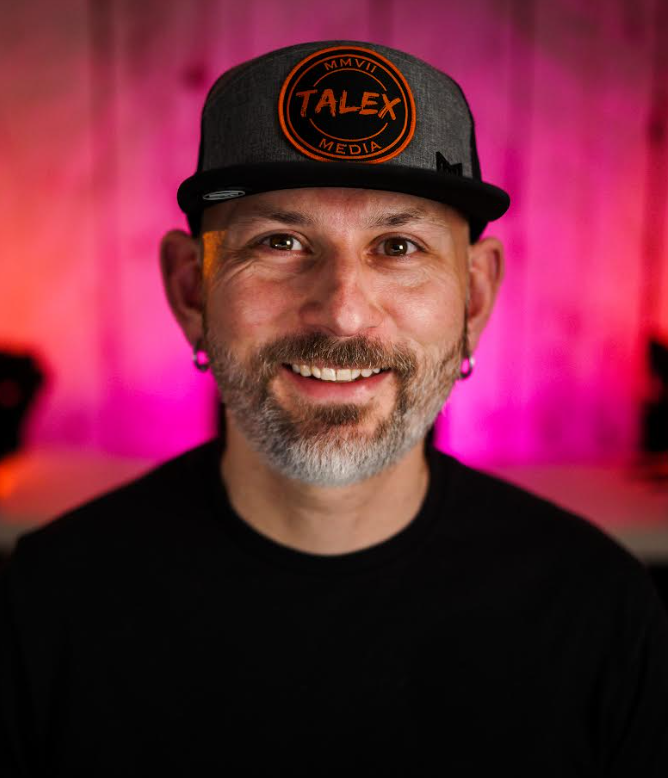You’ve jumped on the video content bandwagon and you’re showing up, filming reels, or even posted a polished video explaining what you do and why it matters. But for some reason, the views are low, the DMs are quiet, and your ideal clients are still ghosting you.
Your video content isn’t landing because it feels like a pitch, not a person.
In this episode of Your Brand Is Showing, I sat down with two-time Emmy Award-nominated Director of Photography and Producer Tom Langan to unpack why most brand videos fall completely flat and how to shift from cookie-cutter clips to story-driven content that actually makes people care.
🎧 Listen on: Apple Podcasts | Spotify

Connect With Tom:
Tom Langan is a two-time Emmy Award nominated Director of Photography and Producer. With a career spanning more than 20 years, Tom has produced 100’s of hours of National and Globally distributed programming for major broadcasters including the BBC, NBC Universal and Discovery. Tom has served as Showrunner and Series Producer on multiple complex and challenging projects overseeing multi-million dollar budgeted productions. He has staffed and led teams filming all over the world in environments ranging from the Arctic Circle to sub-Saharan Africa producing lifestyle, documentary, entertainment and commercial content.
Since (mostly) leaving television production in 2018, Tom has focused on working with entrepreneurs, nonprofits and mission driven organizations to help them positively impact their communities, shape the future of their industry and build meaningful, long lasting relationships with their audience through narrative, value driven content.
In his award winning book ‘Legendering‘ Tom presents a brand-new video communication strategy based in the power of authentic human relationships designed to help businesses and brands lead with value for their audience and build communities of raving supporters around brands.
When Tom isn’t working to help businesses become brands that matter, he pursues what might be described as an eclectic range of hobbies. In his free time Tom is an IronMan triathlete, podcaster, a volunteer firefighter, an amateur chef and a whiskey collector.
What It Really Means to Humanize Your Brand
Humanizing your brand doesn’t mean airing out your personal life or turning your Instagram into a confessional booth. It means bringing the human lens back into your marketing—especially video.
It’s about remembering that the person on the other end isn’t looking for a perfectly polished elevator pitch, they’re looking for a pulse. A glimpse of someone who gets it. Someone who understands what they’re feeling, what they’re frustrated by, and what they actually want to move toward.
As Tom said in the episode, “Businesses need to stop thinking of customers as data points and start remembering they’re just people.”
Sounds obvious, right? But here’s where most businesses get it twisted: they start creating content to convince instead of connect. They show up with stats and scripts and sales tactics, hoping it builds credibility. But connection isn’t built through convincing. It’s built through resonance.
That means letting your values, your perspective, and your real voice take center stage—not the templated, algorithm-approved version of you. When your content sounds like a person, not a pitch, it makes people lean in and remember you.
The Service-Based Mindset Shift (Yes, Even for Product Brands)
Tom made a mic-drop statement that’s still rattling around in my head: “All businesses are service-based businesses.”
Even if you sell a product. Even if you don’t have a traditional ‘client’ model. If you’re solving a problem for someone—whether through coaching, candles, design, dog treats, or anything in between—then what you’re actually selling is a transformation.
Your video content (and all your content, really) shouldn’t be a highlight reel of your features. It should be a mirror, reflecting back the relief, clarity, or confidence your dream client is chasing.
And when you shift your mindset from “I have to promote a service” to “I get to share what this experience changes for someone,” the whole process starts to feel a little less like marketing and a lot more like storytelling.
Because here’s the thing most people forget: people don’t buy your service, they buy the version of themselves they get to be once they’ve worked with you. And your job as a brand is to show them what that version looks like and how you’ll help them get there.
Storytelling Tricks for Scroll-Stopping Content
“Add value” is one of those marketing phrases that feels helpful until you sit down to create something and realize it means absolutely nothing without context.
So let’s make it tangible. When you’re using storytelling as a brand tool—not a diary—you want to keep one thing in mind: Every story you tell should serve a purpose bigger than you.
Here’s a simple framework for storytelling that doesn’t feel like pulling teeth:
- Start with a moment, not a monologue. No one wants a TED Talk. But the awkward, unexpected, messy little moment that happened while you were trying to send a client gift? That’s gold.
- Use analogies that meet your people where they are. Think running a marathon, raising toddlers, scrolling Zillow at midnight. Use what’s already familiar to explain what’s not.
- Connect the dots back to the value you offer. Don’t assume your audience knows what you do or why it matters. Make the bridge obvious—but conversational.
- Let your personality breathe. Personality isn’t something you bolt on—it’s baked into every sentence, every visual, every interaction. Don’t mute it because you’re scared it’ll be “too much.” That’s usually the exact reason people choose you.
Tom brought this up in the episode, and it’s worth repeating: pulling inspiration from other creators doesn’t make you unoriginal—it’s how we refine taste. Just don’t copy-paste. Instead, ask why something resonated, and rework it through your own lens.
The Problem with Trends (and Why They’re Making You Forgettable)
There’s nothing wrong with using trends as seasoning. But if they’re your main content strategy? You’re gonna burn out and blend in.
Trends are designed for mass appeal, not brand-building. When you rely on them, you’re constantly chasing relevance instead of building resonance. And worst of all? You train your audience to expect performance, not connection.
You can absolutely participate in a trend if it aligns with your values, your story, or your audience’s humor. But if you’re doing it just because you saw five other people in your industry do it, take a beat.
Instead of asking, “What’s trending right now?” try asking:
- “What do my dream clients actually need to hear right now?”
- “What have they been quietly struggling with that no one else is naming?”
- “What’s a story or moment I’ve lived through that could help them feel seen or understood?”
That’s the stuff that sticks. That’s what positions you as the one, not just another one.
🎧 Listen on: Apple Podcasts | Spotify

